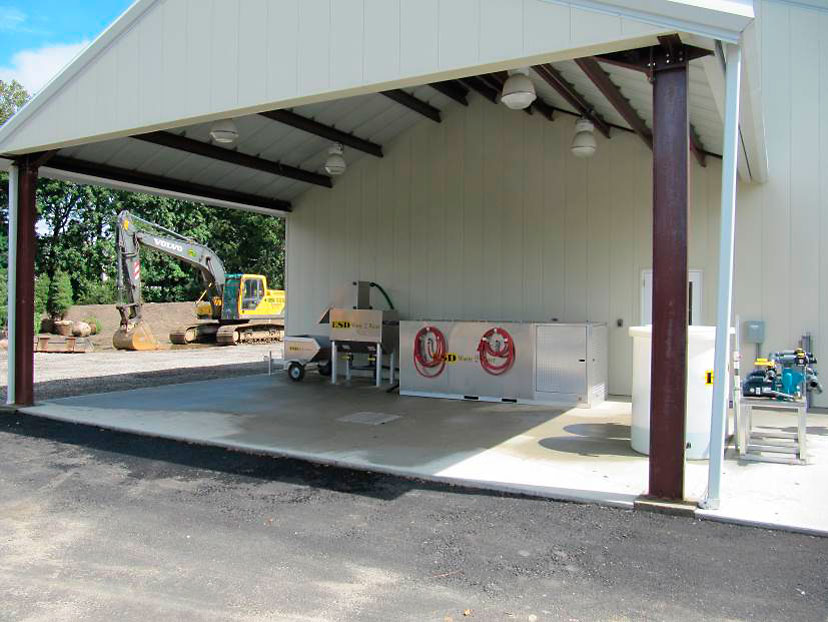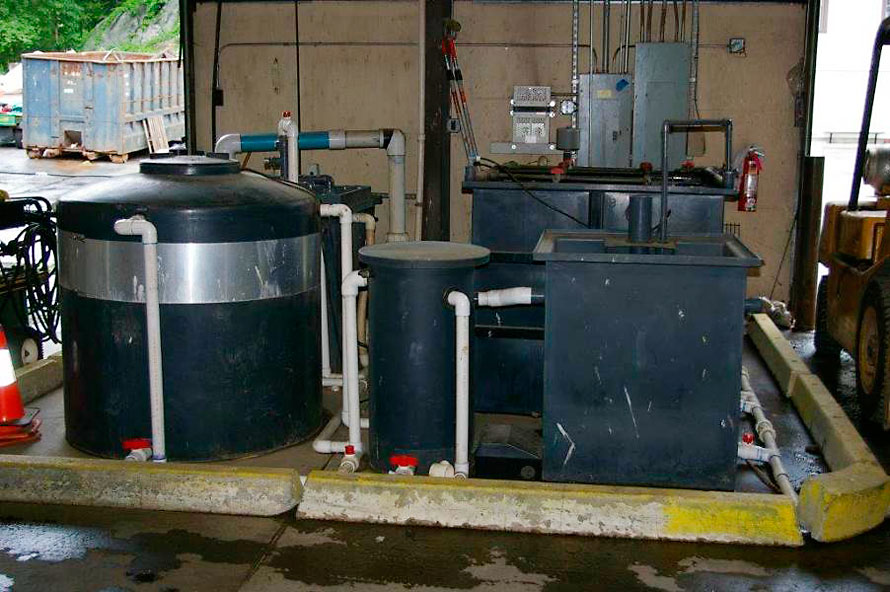Pesticides
Pesticide containers must be cleaned and disposed of or recycled properly. Procedures typically include triple rinsing nonflammable containers and either returning cleaned empty containers to the vendor or properly sealing and disposing of them in a sanitary landfill. Rinsate may be re-applied to turfgrass consistent with instructions on the label. Unused pesticides must be disposed of in accordance with state regulations, such as by returning to the supplier or disposing at an approved hazardous waste facility.
Lubricants, Greases, Paints, and Solvents
Lubricants, greases, paints and solvents should be stored appropriately, typically in fireproof enclosures, separately from pesticides and fertilizers. Special cleaning stations are commercially available that contain and recycle solvents and degreasers.
In addition to any handling precautions specified on the product label or SDS sheet, added steps should be taken to prevent and contain any spills. Spills should be cleaned up using approved dry absorbants. Contaminated material should be stored in containers specially marked as hazardous waste and disposed of using licensed waste haulers and hazmat processors. For more information, see Regulated Hazardous Wastes in NY: http://www.dec.ny.gov/chemical/8486.html.
Organic Waste and Wastewater
The release of organic waste associated with equipment cleaning needs the same level of protection afforded liquid and granular nutrients and pesticides. When debris is removed from equipment, it should not be released into open surface waters or in a location near well heads or shallow groundwater. The figure below shows a well designed wash area.

Equipment wash area. Source: Old Oaks County Club.
Often, effective equipment cleaning areas can be maintained as mixing and loading areas with impervious flooring and drains that allow for some separation of organic solids and liquids.

Stages of treating wastewater, as shown for an activated carbon adsorption system (EPA, P2 Guide).
When using the simple wash-pad and collection area be sure to direct any uncontained liquid to be dispersed along the land, preferably along a designed bio-filtration system. Closed system cleaning stations are available that separate clippings/solids and treat the wash water. The recycled water is reused as wash water. The EPA suggests the stages of treatment, as shown in the figure below.
Another approach to wastewater treatment uses microbes to break down chemical compounds. Both types of systems may require additional purification steps to remove odors and harmful bacteria. These systems must be carefully sized to process the peak water volume anticipated for contaminant levels expected. The equipment varies in costs but increases with structural requirements and permits.
 Microbial system for treating wastewater. Source: Robert Alonzi.
Microbial system for treating wastewater. Source: Robert Alonzi.